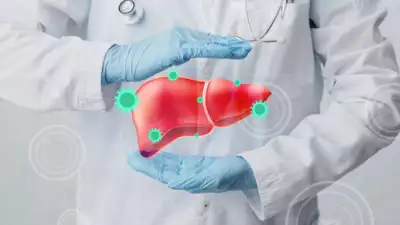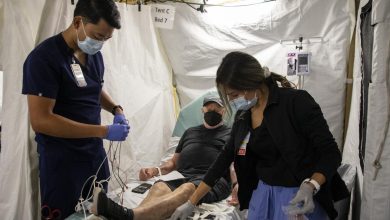Liver-related problems are on the rise in youngsters aged 23-35

Sixty percent of people with hepatitis who come in for treatment have never had the vaccine. An increasing number of young people in the 23–35 age range are being concerned about liver disease. Liver damage is brought on by a number of illnesses, including cirrhosis, hepatitis, fatty liver, and alcohol-related liver disease. Youth mortality and morbidity rates have increased as a result of this.
Improving the prognosis and preserving the lives of children with liver disease depends on prompt screening and treatment of these deadly liver disorders.
The liver is an essential organ that the body uses for many different purposes. This covers processes including hormone regulation, detoxification, nutrient processing, immune system functions, tissue repair, and storing vital chemicals and nutrients. There has been a noticeable increase in the number of people reporting liver-related issues lately. A number of things can damage your liver, including drinking alcohol, smoking cigarettes, dehydration, high sodium intake, viral infections, and long-term use of some drugs. Type 2 diabetes, obesity, and high cholesterol are examples of health factors that may raise the risk of liver-related issues.
“Liver-related severe conditions like acute viral hepatitis, cirrhosis, Alcoholic hepatitis, fatty liver, and NASH (non-alcoholic fatty liver) related chronic liver diseases are significantly rising in the youngsters aged 23-35,” stated Dr. Uday Sanglodkar, Senior Consultant Hepatologist and Clinical Lead Liver and Transplant ICU, Gleneagles Hospitals Parel. The gender ratio is 2:1, with men being nearly twice as high as women. The past few years have seen a rise in this figure due to bad lifestyle choices and excessive alcohol use that is accepted as the standard societal norm. These children’s common complaints include jaundice, or yellowing of the skin and eyes, as well as weight loss, nausea, vomiting, weakness, swelling over the feet, an enlarged spleen, and ascites, or accumulation of fluid in the stomach. Compared to the previous five years, the numbers in my regular practice have increased. Compared to the previous year, but also to the previous five years, I am seeing one in five young adults who have liver disease.
A dangerous illness called cirrhosis has the ability to harm your liver and leave tissue scarring that won’t go away. The healthy tissues found in the liver are actively taken over by these scar tissues. Normal liver tissue swells and scars as a result of the overabundance of fat that the liver begins to accumulate over time. Non-alcoholic fatty liver, or NASH, is the term for an excessive accumulation of fat surrounding the liver in people who drink infrequently or not at all. It is cirrhosis of the liver in its early stages.
Hepatitis is a significant liver infection that can be brought on by a variety of things, including viruses (hepatitis A, B, C, and E), poisons, chemicals, drug addiction, alcohol consumption, genetic problems, and some autoimmune diseases.Hepatitis can occur in many different forms. Hepatitis A can be spread by contaminated food or water, hepatitis B can be spread by blood contact or unsafe sexual contact with an infected person, hepatitis C can spread through blood-to-blood contact, hepatitis D can only infect those who have been diagnosed with hepatitis B, and hepatitis E can spread through contaminated water. It is evident that those who have contracted hepatitis have not had the immunization. Sixty percent of people with hepatitis who come for treatment have not had the vaccine. Getting vaccinated against hepatitis is an easy way to avoid this infection. Currently available vaccinations against Hepatitis A and B should be administered to any high-risk adult over the age of eighteen. The liver can be kept healthy by taking prescription drugs, eating a balanced diet, staying away from processed foods, exercising, and giving up alcohol. But severe liver damage brought on by cirrhosis might necessitate liver transplantation, Dr. Sanglodkar emphasized.
General and HPB surgeon Dr. Prakash Kurane of Apollo Spectra Mumbai declared, “Alcohol intake is to blame for the rise in liver illness among young people aged 20 to 36, which can lead to fatty liver disease and alcoholic hepatitis. Poor dietary decisions that are heavy in sugar and processed foods can also harm the liver at a younger age. Sharing needles for drug usage and engaging in unprotected sexual activity with infected individuals are significant contributing factors to the rising prevalence of liver disease. Taking drugs that are harmful to the liver, particularly fake drugs sold as ayurvedic remedies, is another major cause of hepatitis. Sixty percent of people with hepatitis who come in for treatment have never had the vaccine. Hepatitis is more common in men than in women overall. However, pregnant women are more likely to experience severe consequences from hepatitis E.
Dr. Kurane continued, “Hepatitis frequently presents with fever, malaise, exhaustion, appetite loss, vomiting, diarrhea, and abdominal pain.” Reducing alcohol use, changing to a better diet, and engaging in regular exercise are all part of liver disease treatment. Prescription drugs may be used to treat symptoms like jaundice and stomach discomfort and stop the liver from getting worse. Raising awareness of the potential consequences of liver illness in children and promoting early intervention are crucial in order to avert chronic problems that could require liver transplants. Furthermore, receiving the hepatitis A and B vaccinations is equally crucial to avoiding this deadly infection. Young people can prevent liver disorders by being proactive.




